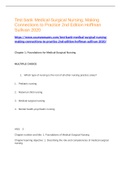Summary
Summary 'Organization Theory & Design' ; Daft, Murphy and Willmott; Chapter 1 - 14 (whole book); ISBN 9781473765900
- Course
- Institution
- Book
Samenvatting 'Organization Theory & Design' ; Daft, Murphy and Willmott; Chapter 1 - 14 (whole book); ISBN 5900. In de samenvatting zijn afbeeldingen uit het boek toegevoegd ter ondersteuning van de theorie. Daarnaast bevat de samenvatting een automatische inhoudsopgave, om snel in het document te ...
[Show more]













